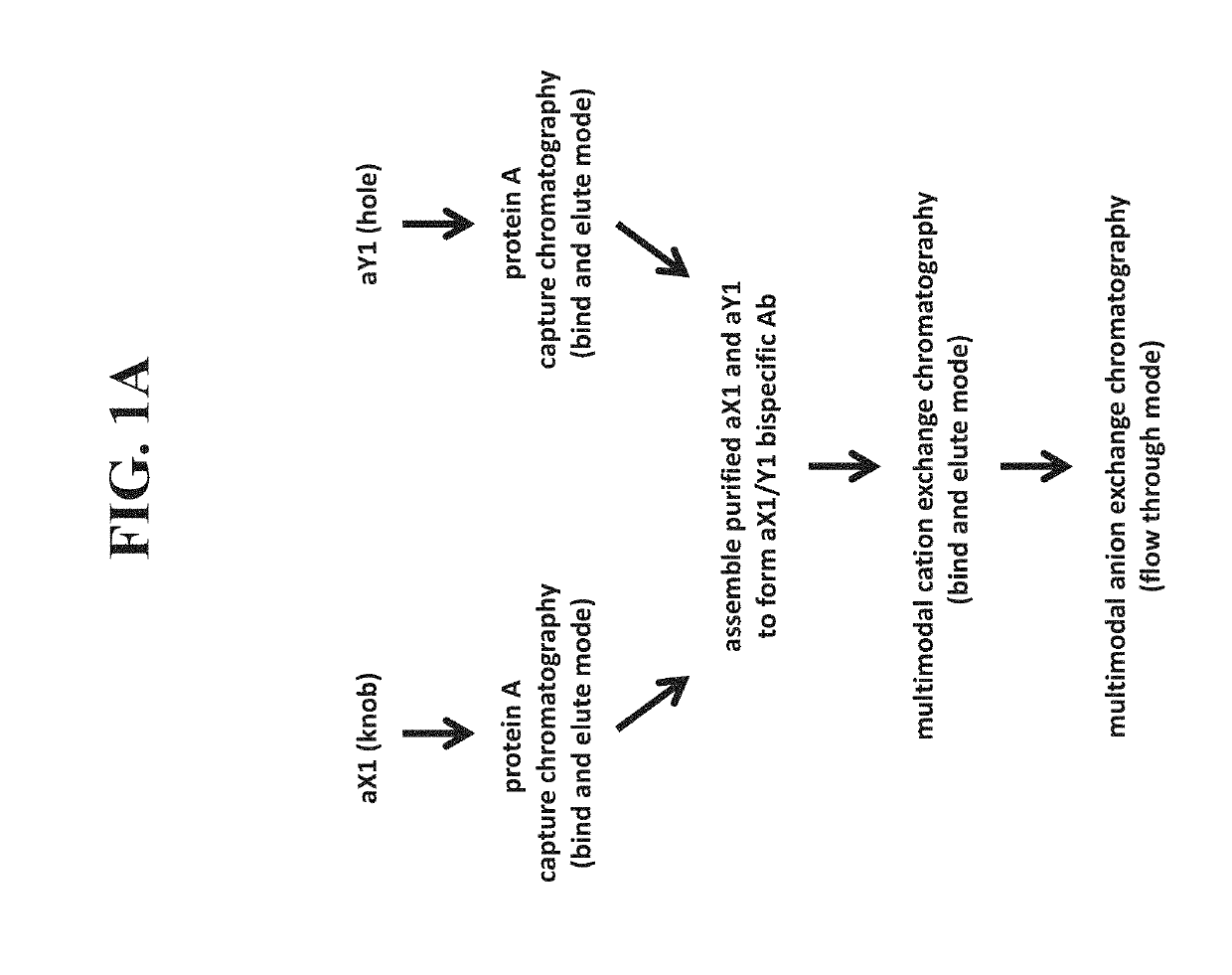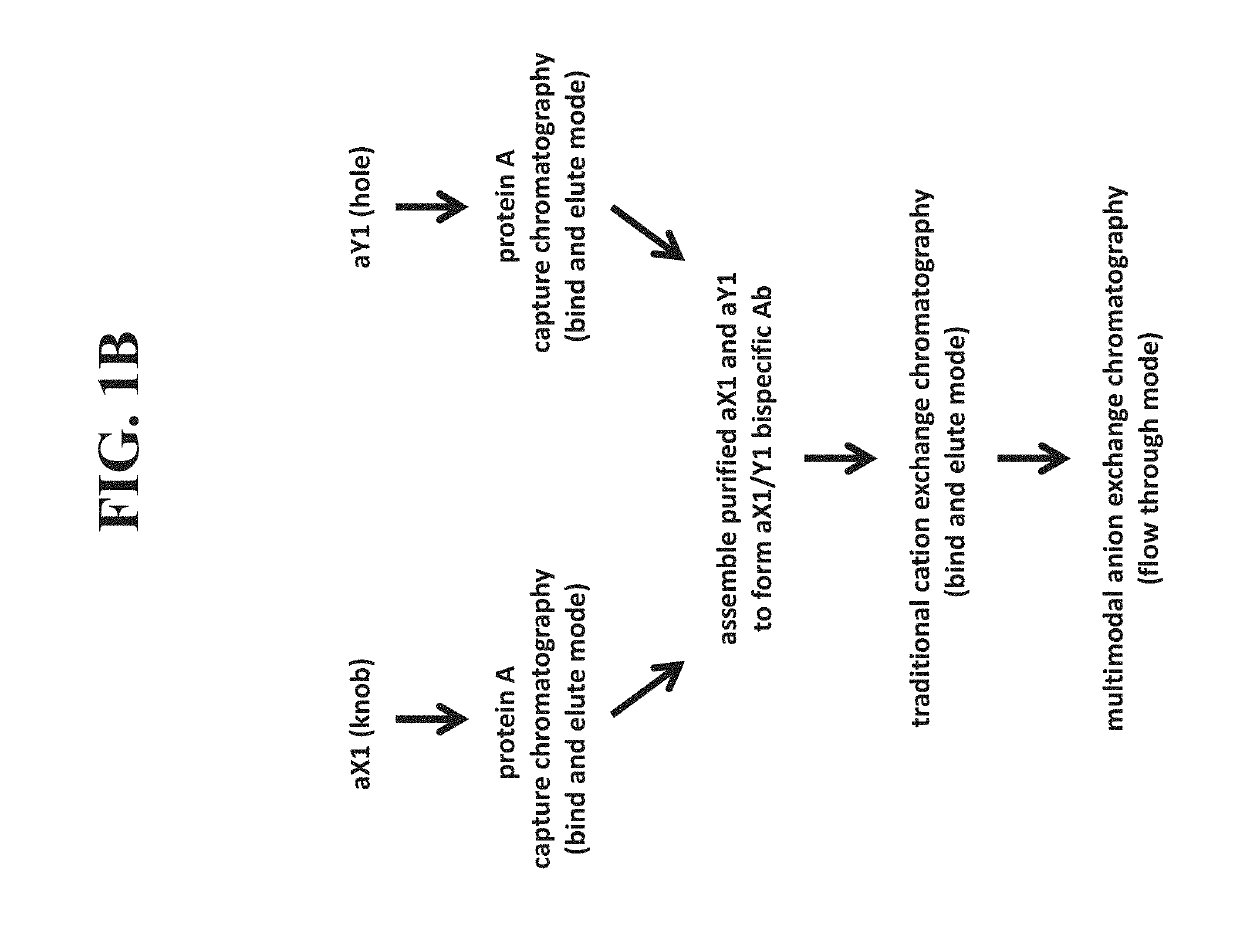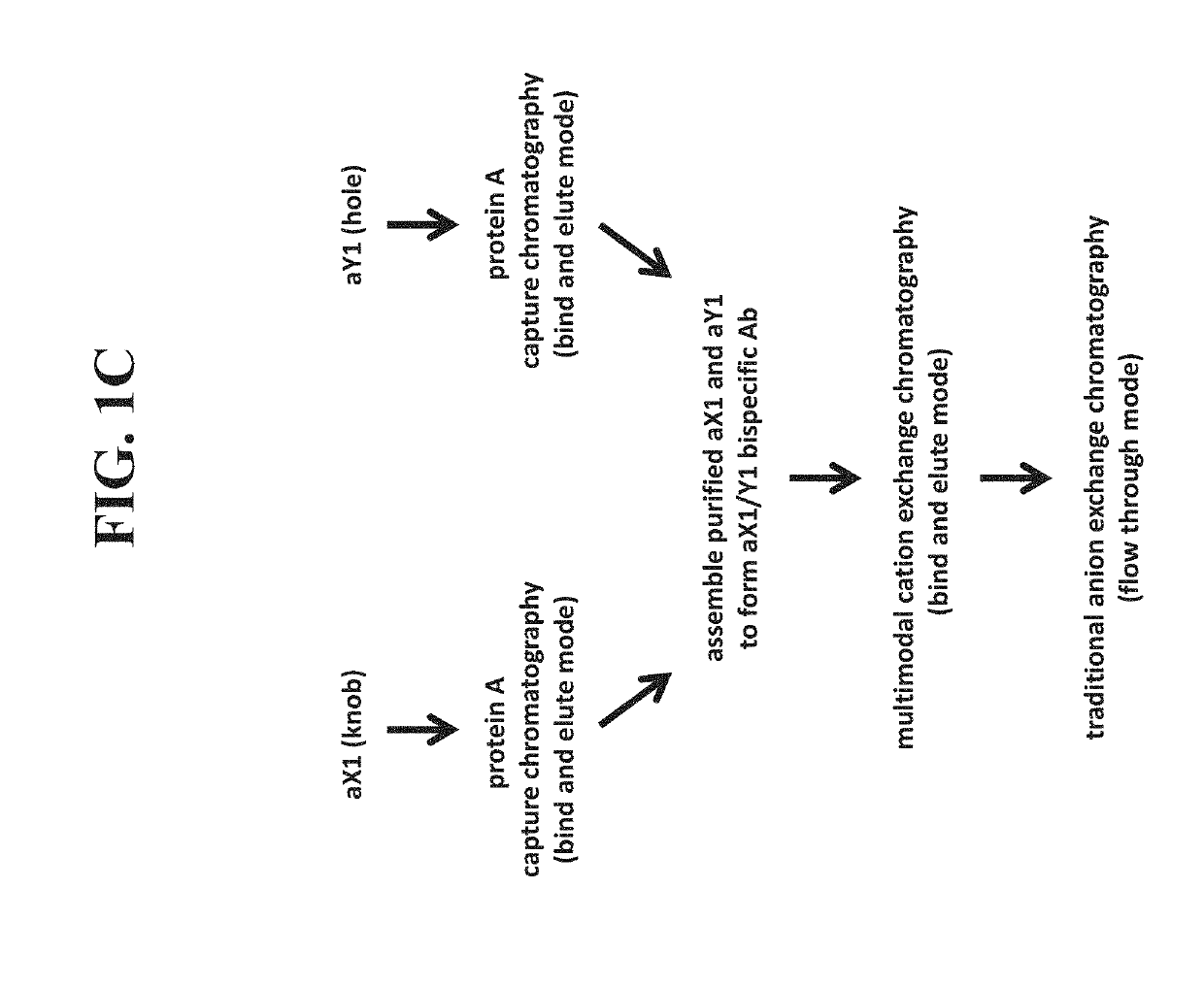Purification of multispecific antibodies
a technology of multispecific antibodies and purification processes, applied in the field of purification of multispecific antibodies, can solve the problems of new antibody formats such as multispecific antibodies, new challenges, and insufficient conventional manufacturing and purification processes, and achieve the effect of reducing the amount of process-specific impurities
- Summary
- Abstract
- Description
- Claims
- Application Information
AI Technical Summary
Benefits of technology
Problems solved by technology
Method used
Image
Examples
example 1
Assembly and Purification of an Anti-X1 / Anti-Y1 Bispecific Antibody
[0465]A bispecific antibody against target proteins X1 and Y1—anti-X1 / anti-Y1 bispecific antibody or aX1 / Y1 bispecific—was assembled as follows. Each half-antibody (aX1 (knob) and aY1 (hole)) was independently subject to an affinity chromatography step using protein A resin (MabSelect SuRe, GE Healthcare). The protein A step is completed independently for each half-antibody using similar process conditions but different load density targets. Protein A columns were run at ambient temperature (15-30° C.) and the load was chilled to 12-18° C. Protein A columns were prepared by applying three column volumes of elution buffer followed by three column volumes of regeneration buffer. The columns were then equilibrated, loaded, washed three times (equilibration buffer wash, potassium phosphate wash, equilibration buffer wash), eluted, and regenerated for sufficient cycles to process the load material. The pooled material fro...
example 2
Assembly and Purification of a F(ab′)2Bispecific
[0474]Initial attempts to achieve 90% pure F(ab′)2 bispecific resulted in low yields (less than 10% starting material). Adding to the problem of maintaining acceptable yields without a loss in purity were several challenges, including the instability of process intermediates and the presence of product-related variants, such as homodimers, free light chains and heavy chains, and unreacted Fab′ leaving groups. Novel unit operations were developed in order to achieve effective assembly and purification of the desired bispecific F(ab′)2. A bispecific F(ab′)2 comprising two different Fab′ molecules was assembled and purified as depicted in the schematic provided in FIG. 2.
[0475]First, a capture step was implemented as follows. Each Fab′ was first captured from separate E. coli extract supernatants. Supernatants containing one of the two Fab′ half-molecules were subjected to a capture step using CaptoL Protein L affinity chromatography resi...
example 3
Assembly and Purification of an Anti-X2 / Anti-Y2 Bispecific Antibody
[0486]In another example, a bispecific antibody was purified as follows. Each half antibody was produced separately and subjected to affinity chromatography, followed by assembly as described herein. Following assembly, the assembly material was first subjected to multimodal anion exchange chromatography using Capto™ Adhere resin in a bind and elute mode. The assembly material was adjusted to pH 7.5 and loaded onto the column that was pre-equilibrated with 150 mM acetate / Tris buffer, pH 7.5. Following loading, the column was washed with equilibration buffer and the bound protein was eluted with 25 mM acetate, pH 5.0. Collection of elution pool was triggered based on A280 nm signal. The Capto™ Adhere elution pool was then subjected to multimodal cation exchange chromatography using Capto™ MMC resin in a bind and elute mode. The Capto Adhere elution pool was adjusted to pH 6.5 and loaded on to Capto MMC column pre-equi...
PUM
| Property | Measurement | Unit |
|---|---|---|
| Length | aaaaa | aaaaa |
| Fraction | aaaaa | aaaaa |
| Fraction | aaaaa | aaaaa |
Abstract
Description
Claims
Application Information
 Login to View More
Login to View More - R&D
- Intellectual Property
- Life Sciences
- Materials
- Tech Scout
- Unparalleled Data Quality
- Higher Quality Content
- 60% Fewer Hallucinations
Browse by: Latest US Patents, China's latest patents, Technical Efficacy Thesaurus, Application Domain, Technology Topic, Popular Technical Reports.
© 2025 PatSnap. All rights reserved.Legal|Privacy policy|Modern Slavery Act Transparency Statement|Sitemap|About US| Contact US: help@patsnap.com



